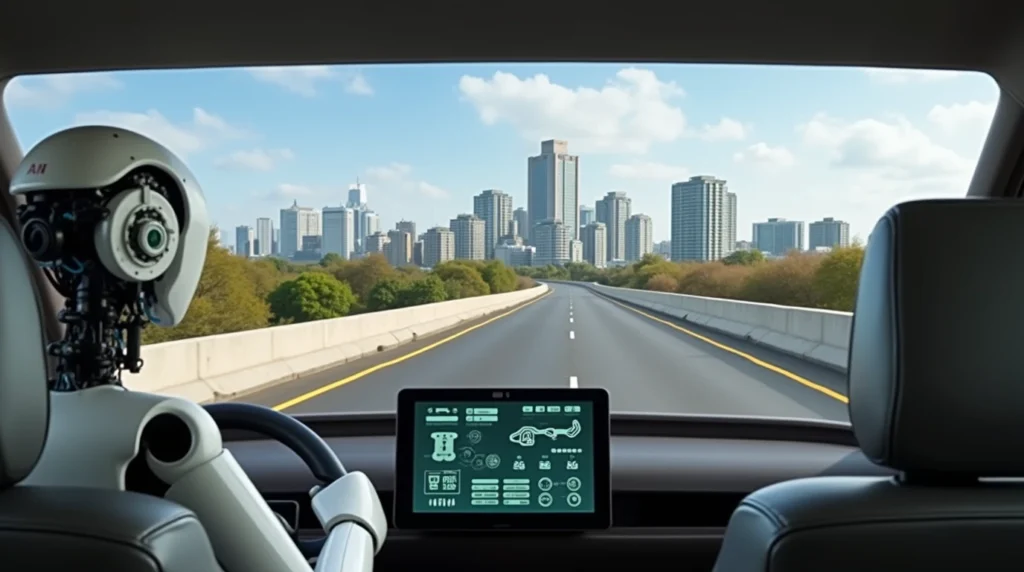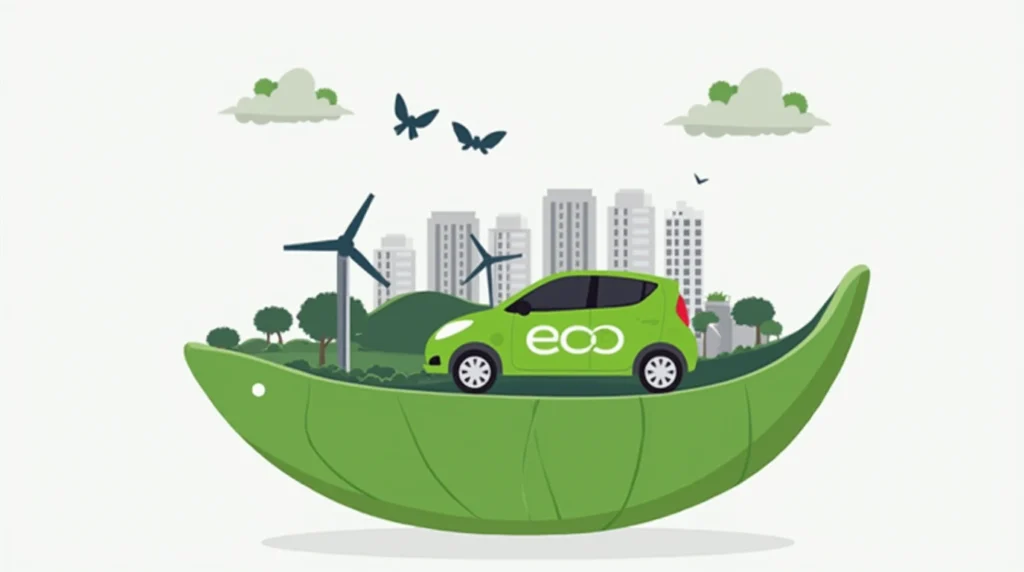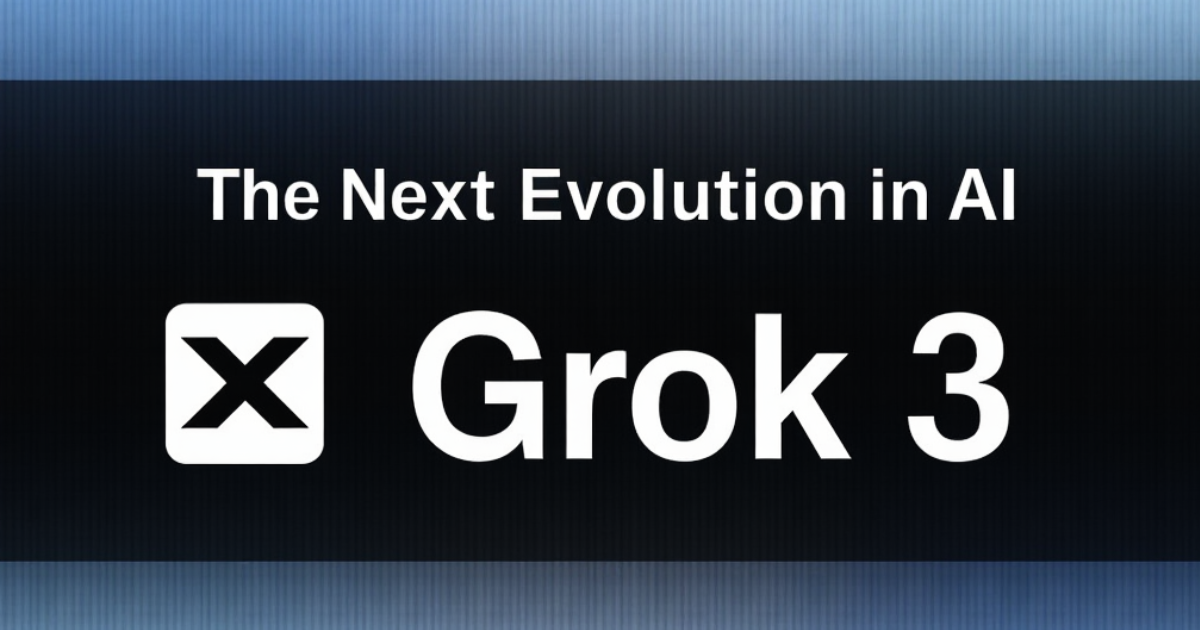How AI is Revolutionizing Green Automotive Technology
Imagine a world where your car doesn’t just reduce emissions but actively fights climate change. Thanks to artificial intelligence (AI), this vision is no longer science fiction. From electric vehicles (EVs) that learn your driving habits to factories that slash waste using smart algorithms, AI is rewriting the rules of sustainable transportation.
Let’s explore how this technology is transforming green automotive innovation—and what it means for you.
Introduction: Green Automotive Technology
The Road to a Greener Future
You’ve likely heard about electric vehicles and renewable energy, but did you know AI is the silent force accelerating these advancements? By 2030, the global AI-in-automotive market is projected to hit $74.5 billion, with sustainability driving much of this growth. AI isn’t just making cars smarter; it’s making them greener, leaner, and more efficient. In this article, you’ll discover how AI powers everything from battery longevity to traffic systems—and why these innovations matter for the planet and your wallet.
Enhancing Electric Vehicle (EV) Efficiency with AI

AI in EV Battery Management
Your EV’s battery is more than just a power source—it’s a sophisticated system that AI optimizes for maximum efficiency. Here’s how:
- Predictive Charging: AI analyzes your driving habits, weather forecasts, and traffic conditions to determine the best charging times. For instance, if you typically drive to work at 8 AM, AI ensures your battery is fully charged by then, avoiding unnecessary charging cycles that can degrade the battery over time. Companies like Tesla use machine learning algorithms to refine their Battery Management Systems (BMS), improving range and reliability.
- Thermal Management: Batteries perform best within a specific temperature range. AI sensors monitor and adjust battery temperature in real-time, preventing overheating or cooling, which can significantly extend battery lifespan. This is particularly important in extreme climates where temperature fluctuations are common.
- State of Charge (SoC) Optimization: AI ensures that your battery operates within an optimal SoC range, typically between 20% and 80% capacity. This reduces wear and tear, as fully charging or completely draining a battery can cause stress on the cells.
Predictive Maintenance for EVs
Predictive maintenance is revolutionizing how EVs are serviced. AI-driven diagnostics monitor your vehicle’s health continuously, identifying potential issues before they become major problems:
- Real-Time Monitoring: Sensors track everything from motor efficiency to brake pad wear. If any component shows signs of failing, AI alerts you or your service provider, allowing for proactive maintenance.
- Data Analytics: By analyzing data from millions of vehicles, AI can predict when parts are likely to fail based on usage patterns. This reduces downtime and cuts repair costs by up to 35%, according to a McKinsey study.
- Efficient Scheduling: AI optimizes maintenance schedules, ensuring that repairs are done during routine visits, minimizing the need for additional trips to the service center.
Tesla’s AI-Driven Energy Management
Tesla is at the forefront of AI-driven energy management. Their systems optimize energy use in several ways:
- Autopilot and Energy Efficiency: Tesla’s Autopilot isn’t just for steering; it also adjusts energy consumption based on road conditions. For example, it can predict when to coast or when to use regenerative braking to recover energy.
- Preheating Batteries: In cold weather, Tesla’s AI preheats the batteries to maintain efficiency. This ensures that your car performs optimally even in freezing conditions.
- Smart Routing: Tesla’s AI routes drivers to the fastest charging stations, reducing idle time and ensuring that you reach your destination quickly.
AI in Autonomous and Smart Traffic Systems
Autonomous vehicles and smart traffic systems are transforming urban mobility, making it more efficient and sustainable.

Autonomous Vehicles and Fuel Efficiency
Autonomous EVs like those developed by Waymo use AI to optimize fuel efficiency:
- Steady Speeds: Autonomous vehicles maintain consistent speeds, reducing the stop-and-go pattern that wastes fuel. This results in a 12-15% decrease in emissions compared to human-driven vehicles.
- Route Optimization: AI chooses routes with minimal traffic and elevation changes, further reducing energy consumption.
- Predictive Acceleration: Autonomous cars can predict when to accelerate or brake, smoothing out the driving experience and minimizing unnecessary energy use.
Waymo’s Autonomous EVs in Action
Waymo’s autonomous fleet is a prime example of AI in action:
- Advanced Sensors: Waymo’s vehicles use lidar, cameras, and radar to detect obstacles up to 300 meters ahead, ensuring safe navigation.
- Shared Data: These vehicles share traffic data with other cars, helping to ease congestion and reduce travel times.
- Pedestrian Prediction: AI predicts pedestrian behavior, allowing the vehicle to adjust its speed and trajectory accordingly.
AI-Driven Traffic Optimization
Cities worldwide are adopting AI-driven traffic management systems to reduce congestion and emissions:
- Smart Traffic Lights: AI synchronizes traffic lights in real-time, ensuring smooth traffic flow and minimizing idling time.
- Dynamic Lane Management: AI allocates lanes based on traffic conditions, prioritizing buses and EVs to reduce emissions.
- Real-Time Traffic Updates: AI provides drivers with real-time traffic updates, helping them avoid congested areas and reduce travel times.
AI-Powered Sustainable Manufacturing
AI is revolutionizing manufacturing by making it more sustainable and efficient.
Volkswagen’s Green Factories
Volkswagen’s AI-powered assembly lines in Zwickau, Germany, are a model for sustainable manufacturing:
- Material Waste Reduction: AI optimizes production processes to cut material waste by 17%, reducing the environmental impact of manufacturing.
- Efficient Paint Application: AI adjusts paint spray patterns to minimize waste, saving 500,000 liters of paint annually.
- Automated Quality Checks: AI-driven quality control systems reduce the need for energy-intensive reworks by detecting defects early in the production process.
Renewable Energy Integration
AI helps integrate renewable energy sources into manufacturing processes:
- Energy Balancing: AI balances energy from solar, wind, and grid sources based on weather forecasts, ensuring that factories run on the cleanest available energy.
- Energy Storage: Excess energy is stored in onsite EV batteries during low-demand periods, reducing reliance on non-renewable sources.
The Rise of Smart Factories
Smart factories are the future of manufacturing, with AI at their core:
- Predictive Maintenance: AI monitors equipment health, preventing breakdowns and reducing downtime.
- Dynamic Production Scheduling: AI adjusts production schedules to match renewable energy availability, maximizing efficiency.
- Automated Recycling: AI-driven systems sort and recycle materials more efficiently, minimizing waste.
AI for Eco-Friendly Vehicle Design and Development
AI is transforming vehicle design, making cars more efficient and sustainable.
Aerodynamics and AI-Assisted Design
AI tools like Generative Design simulate millions of shapes to find the most aerodynamic profiles:
- Drag Reduction: Mercedes-Benz used AI to redesign side mirrors, cutting drag by 5% and improving fuel efficiency.
- Underbody Optimization: AI helps optimize underbody panels for smoother airflow, further reducing drag.
Lightweight Materials Revolution
AI assists engineers in selecting and optimizing lightweight materials:
- Virtual Testing: AI simulates the strength and weight of composite materials, allowing for rapid prototyping and testing.
- BMW’s Lightweight Chassis: BMW reduced chassis weight by 22% using AI-designed materials, enhancing efficiency without compromising safety.
Bi-Directional Charging Systems
AI manages bi-directional charging, allowing your EV to power your home during blackouts:
- Energy Balancing: AI ensures that energy is balanced between grid demand and household needs.
- Selling Excess Energy: AI optimizes when to sell excess energy back to utilities, providing a potential income stream.
Future Trends and Challenges
The future of AI in green automotive technology is promising but not without challenges.
Hydrogen Fuel Cells Meet AI
Toyota’s AI-controlled hydrogen fuel cells are a promising development:
- Output Adjustment: AI adjusts fuel cell output based on driving style, optimizing efficiency.
- Predictive Refueling: AI predicts when refueling is needed, using map data to guide drivers to the nearest hydrogen stations.
Google Cloud’s Sustainable Supply Chains
AI isn’t just for manufacturing—it’s also for logistics. Google Cloud’s tools help automakers:
- Track Ethical Sources: AI tracks raw materials from ethical sources, ensuring that supply chains are transparent and sustainable.
- Optimize Shipping Routes: AI optimizes shipping routes to cut fuel use, reducing the carbon footprint of logistics.
Ethical and Technical Hurdles
Despite the progress, there are challenges ahead:
- Data Privacy: Who owns your driving data, and how is it protected?
- Energy Costs: Training AI models consumes significant energy—can renewables offset this?
- Regulation: Governments must keep pace with innovation to ensure safety and sustainability standards are met.
Conclusion: Your Role in the AI-Driven Green Revolution
AI is transforming the automotive industry, but it needs your support. By choosing AI-enhanced EVs, advocating for smarter traffic policies, and spreading awareness, you can contribute to a greener future. The future of sustainable transportation isn’t just about technology—it’s about the choices you make today.



